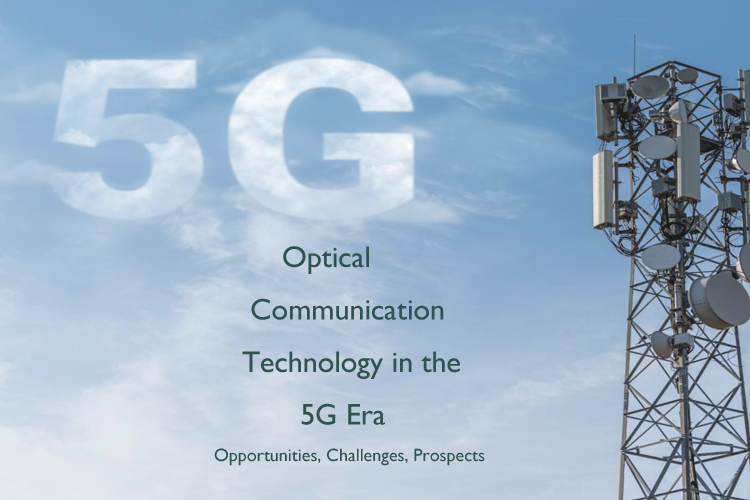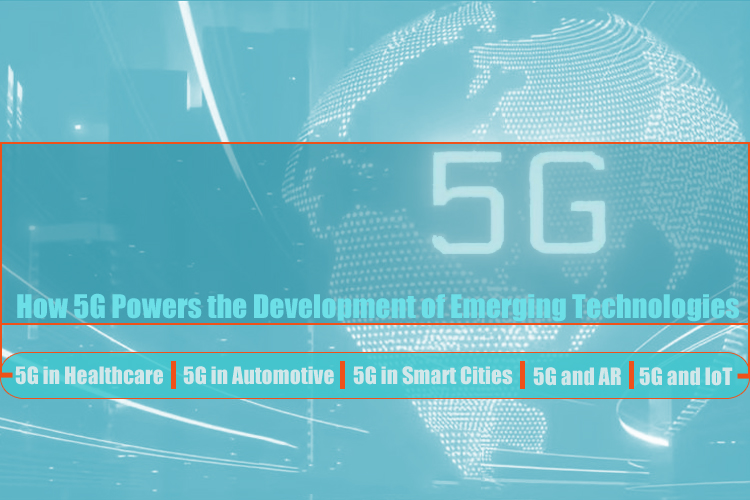Optical Communication Technology in the 5G Era: Opportunities, Challenges, and Prospects
Introduction
The fifth generation of mobile networks, or 5G, promises to revolutionize communication, opening doors for a wide range of new applications and services. A key factor in enabling this revolution is optical communication technology, which forms the backbone of 5G infrastructure. In this article, we explore the opportunities and challenges of optical communication technology in the 5G era and shed light on its potential impact as we transition to next-generation networks.

Opportunities
1. Increased demand for optical fiber infrastructure: As 5G networks require high-capacity, high-speed, and low-latency connections, massive investments and efforts expected in upgrading and expanding the existing optical fiber infrastructure. This growth in demand presents new opportunities for telecom service providers, equipment manufacturers, and architects of fiber optic network solutions.
2. Densification of network architecture: The higher data rates associated with 5G require deployment of small cells and Centralized Radio Access Network (C-RAN) architectures. It leads to densification of network architecture, driving the demand for highly reliable and low-latency fiber-optic connections. Consequently, optical communication systems will benefit from a more dynamic and demanding market.
3. Growth in data center interconnects: 5G’s explosive data traffic growth necessitates robust high-capacity data center interconnects (DCIs) to maintain efficiency and performance. In this scenario, innovations in optical communication technologies will be crucial for enabling fast and efficient data transmission between data centers.
4. New applications and services: Emerging applications, such as IoT, connected vehicles, and smart cities, fuel the demand for high-speed and low-latency optical communication networks. It, in turn, opens up new avenues for innovation, product development, and business prospects.
5. Innovation in optical components and transmission technologies: Manufacturers and researchers are encouraged to develop new optical components, multiplexing techniques, and transmission technologies, ensuring more efficient and high-performance network solutions for the 5G era.
Challenges
1. Meeting the demand for increased capacity and performance: Optical communication systems face the challenge of continuous improvement to meet the high-speed, low-latency requirements of 5G networks. Researchers and developers must push the limits of technology to achieve these goals.
2. Integration of legacy networks: Seamlessly integrating existing networks with new 5G optical communication infrastructure presents a considerable challenge that requires innovative technical approaches and compatibility solutions.
3. Network complexity and management: With the increase in network density and capacity in the 5G era, managing networks becomes more complex. Efficient management tools and automation techniques must be developed to ensure smooth network operation in the face of growing complexity.
4. Security concerns: As optical communication networks become more integral to various aspects of daily life, addressing digital security, data privacy, and network intrusion issues will be paramount. Ensuring reliable and secure optical communication networks is a critical challenge to overcome.
5. Cost-effective solutions: Bringing down the costs of optical communication equipment and infrastructure will be a key factor in widespread 5G adoption. Innovations that reduce costs while maintaining optimal performance are needed to drive the transition to the 5G era.
Conclusion
Optical communication technology has a vital role to play in realizing the potential of the 5G era. With new opportunities in infrastructure, network architecture, and applications, the prospects for growth and innovation in the field are immense. However, to capitalize fully on these opportunities, the industry must address the significant challenges of increased capacity, performance demands, integration of legacy networks, network complexity, security, and cost-effectiveness. By developing creative solutions to these challenges, optical communication technology will lay the foundation for a new era of communication, propelling us into the future of 5G and beyond.

 Unlocking the Future: How 5G Powers the Development of Emerging Technologies
Unlocking the Future: How 5G Powers the Development of Emerging Technologies
 The Future of Fiber Optic Communication Network Architecture: Evolution and the Role of SDON Technology
The Future of Fiber Optic Communication Network Architecture: Evolution and the Role of SDON Technology
 What opportunities and challenges does free-space optical communication technology face?
What opportunities and challenges does free-space optical communication technology face?
 Opelink MPO Products for High-Speed Data Center Applications
Opelink MPO Products for High-Speed Data Center Applications